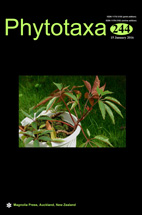Abstract
Cuticular features potentially offer valuable information on phytotaxonomy, especially for plants that are difficult to classify or identify. Cryptocarya is one such difficult and poorly known genus, and we investigated its cuticular features to evaluate their taxonomic implications. We examined cutinized leaf epidermis and the stomatal complex for 21 species from Peninsular Malaysia, Thailand and Indo-China, as well as one species endemic to Borneo and one to Sumatra, and compared features among members of this group, between this group and congeners in the other countries, and between this group and the other genera of Lauraceae. Many of the Cryptocarya species studied have straight to slightly curved anticlinal epidermal walls and butterfly-shaped stomatal ledges, although some variation was seen in the ornamentation of the periclinal epidermal walls and the appearance of the stomatal complex. Based on these results, we recognized four groups and two subgroups among the South-east Asian species. Comparison with congeneric taxa in the other countries indicates that butterfly-shaped stomatal ledges are often shared among the species across the regions. However, no cuticular features occur exclusively in any of the species groups of Cryptocarya studied here, nor in the genus as a whole. We consider that cuticular features are useful in the recognition of infrageneric groups within Lauraceae, bearing in mind that they might have evolved in parallel in different genera.

